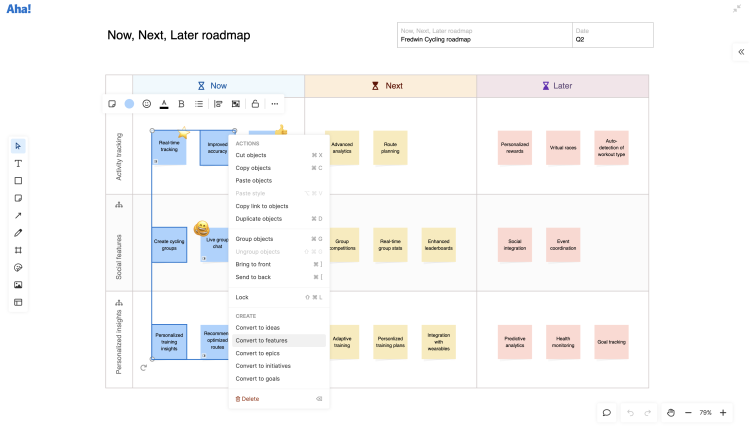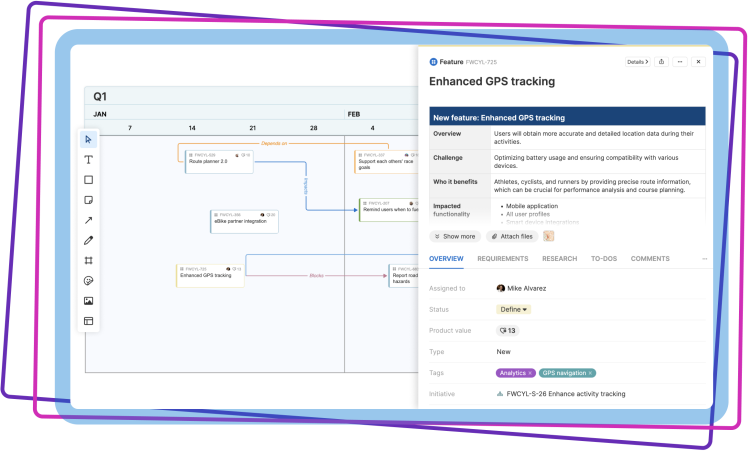

Streamline strategic planning
Establish a bridge from concept to feature. Use Aha! Whiteboards as an integrated part of Aha Roadmaps to share ideas, align on priorities, and mock up user experiences. This helps ensure continuity as you transition from early ideation to roadmap planning. You can also add colleagues as dedicated Aha! Whiteboards Advanced users so they can create, edit, and view whiteboards in your account.
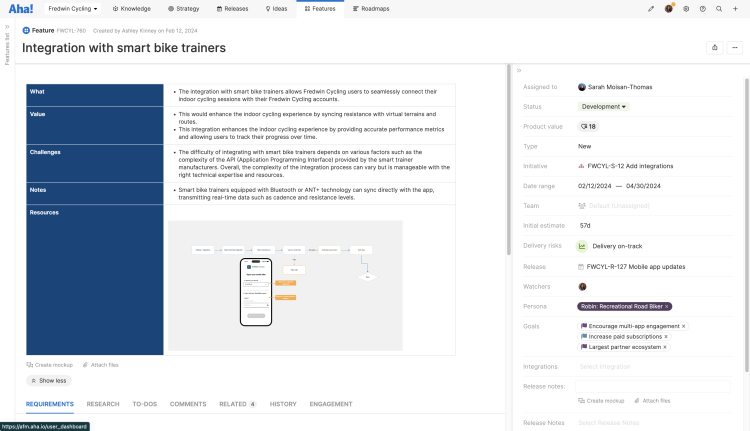
Design user flows
Embed whiteboards directly into any work item to convey how new functionality should work. Map out the user flow for new features and create wireframes. Use collaboration tools such as to-dos and inline comments to gather feedback from stakeholders. This helps your teammates in UX and engineering understand your vision before implementation begins.
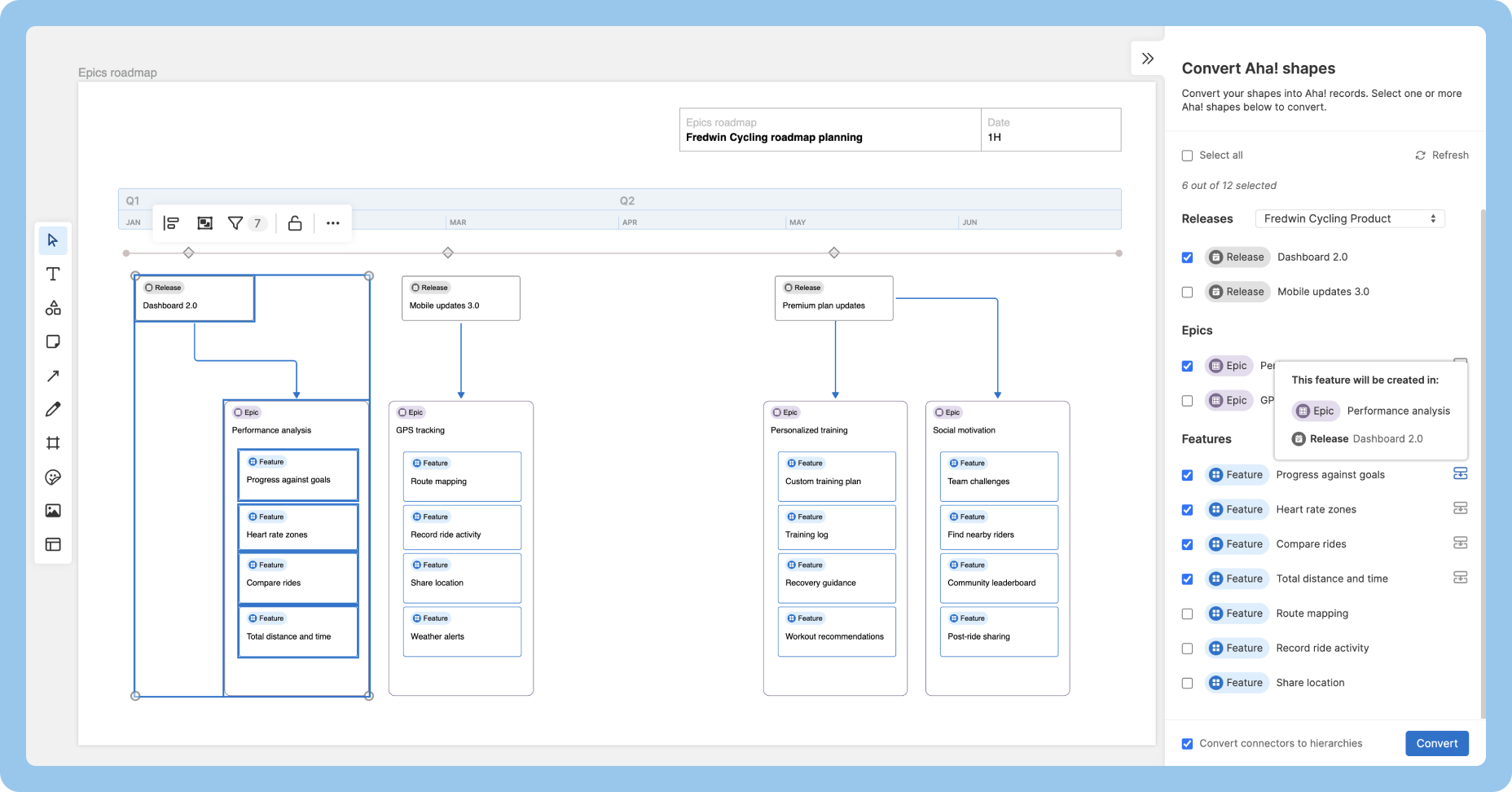
Turn concepts into plans
Explore high-level plans on a whiteboard. Use Aha! shapes to think through goals, initiatives, ideas, epics, and features — mapping out the relationships between them. Automatically convert them into tangible work items in one go. Then, open the record cards directly from the whiteboard to quickly populate details.
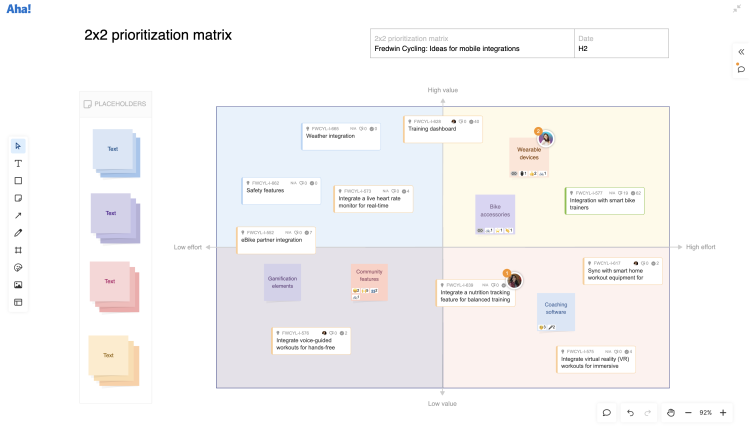
Align on priorities
Pull existing roadmap work items into a whiteboard so you can evaluate different approaches before finalizing your plans. For example, you can export a set of ideas or features and move them around on a 2x2 matrix to visualize their relative importance. Invite stakeholders to vote on their top priorities, and then update the work items directly from the whiteboard to schedule them for delivery.
Gather feedback
Run collaborative planning sessions. Bring views from Aha! Roadmaps — like Gantt charts, roadmaps, list reports, and pivot tables — directly onto a whiteboard to explore options. Discuss trade-offs, map dependencies, and sequence work. Then, update your plans directly from the whiteboard to finalize decisions and keep data structured.
